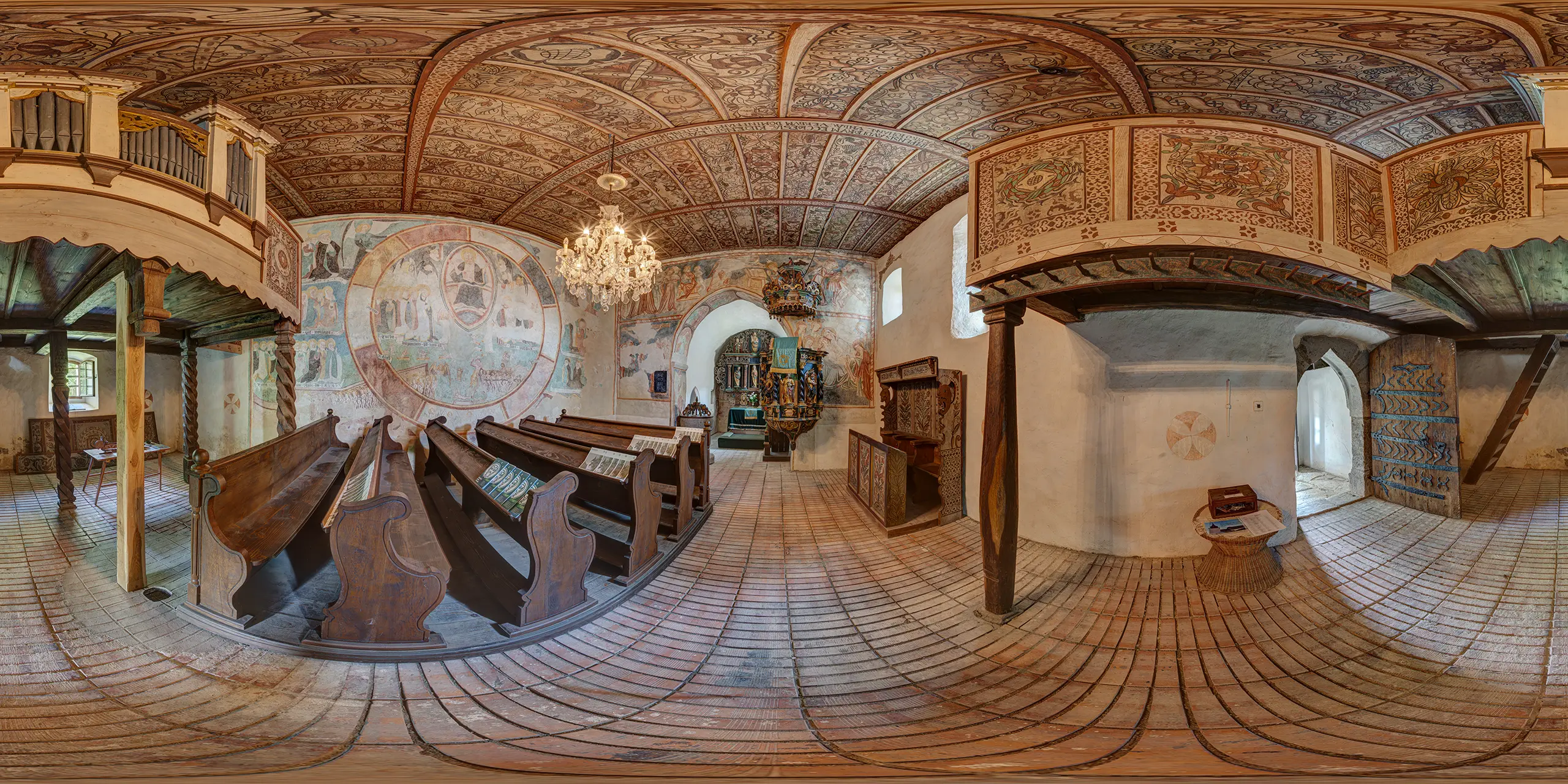
Kyjatice
Kyjatice, Evangelical Church of Augsburg Confession
The church in Kyjatice dates from the late 13th or early 14th century. It was originally a fortified Romanesque-Gothic single-nave church with a presbytery, an attached tower on the eastern side and a sacristy on the northern side. The ruins of a former school and rectory are located in the area.
Behind the walls of the church you will discover unique medieval wall paintings, which come from two stages - from the end of the 14th century (presbytery, triumphal arch) and from the first half of the 15th century (north wall of the nave). The frescoes were whitewashed after the Reformation. They were discovered by István Groh in 1894, after which they were painted again. They were restored in the 1980s.
Draw your attention to these wall paintings
The Last Judgement
The unique monumental painting The Last Judgement on the north wall of the nave of the church probably dates from 1426. In the centre of the large circle is Jesus in a mandorla. At his sides are angels with the ArmaChristi (instruments of his passion). Christ is judging the living and the dead, rising from their graves and dividing them into the righteous and the condemned. The nine fields of the circle represent the ascension of the nine distinctive angelic choirs and hosts of the triumphant Church. The painting is reminiscent of the illustrations in the manuscripts of St. Hildegard of Bingen.
Angel with two crowns and the front wall of the presbytery
The figure of an angel with two royal crowns is located on the east side of the presbytery of the church in the deep lining of the eastern round window. The art historian Milan Togner has speculated that it is the figure of St. Louis of Toulouse. Louis of Toulouse is a saint of the Anjou dynasty, the son of Charles II of Naples and Princess Mary of Hungary of the House of Arpad. Louis renounced his claim to the throne in favour of his younger brother and entered the Franciscan Order. He later became Bishop of Toulouse. Above the scene of the angel is painted God the Father blessing in a mandorla*and two female kneeling figures at the sides. In the lower band is a group of four saints and an apostle.
*Mandorla = typical medieval decoration, especially in the Romanesque style, an oval or elliptical halo around the Majesty of Christ (Christ - Ruler of the World) in the shape of an almond. An almond-shaped halo encircling the body of the entire deity.



